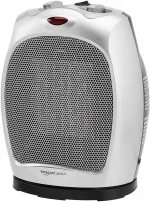So if you guys remember I have a loud and oversized furnace for my house and climate (10K BTU for 1500-1700 sqft house in 62F winter) and it is cycling on and off every other 5 minutes, very loud combustion air vent through between 2 bedroom walls, hot and dry air, etc.
So I was thinking about replacing the furnace in the past to something smaller but another idea comes across my head yesterday. What if I install hot water re-circulation pump at the bathroom sink and loop it through a bunch of pex pipe (heat loss = radiator), turn it on at night to blow a small amount of warm air to the room nearby? I do not need it super warm, just enough to keep it warmer than no heat at all is good (need only about 4-5F increase in temperature in about 200 sqft of space). Most importantly I can use very low noise fan at low airflow (i.e. 1400rpm PC fan) and low noise re-circulation pump, or even no airflow and lay a continuous pex pipe under beds.
I don't think the efficiency of the water heater is a problem, it is 60% instead of the 80% of furnace, but I am using just as much as I need instead of being oversize, and it is blowing over a much smaller space instead of warming the whole house.
What do you guys think? Since it is winter only and visible it should be low risk and easy to spot if there is any problem.
So I was thinking about replacing the furnace in the past to something smaller but another idea comes across my head yesterday. What if I install hot water re-circulation pump at the bathroom sink and loop it through a bunch of pex pipe (heat loss = radiator), turn it on at night to blow a small amount of warm air to the room nearby? I do not need it super warm, just enough to keep it warmer than no heat at all is good (need only about 4-5F increase in temperature in about 200 sqft of space). Most importantly I can use very low noise fan at low airflow (i.e. 1400rpm PC fan) and low noise re-circulation pump, or even no airflow and lay a continuous pex pipe under beds.
I don't think the efficiency of the water heater is a problem, it is 60% instead of the 80% of furnace, but I am using just as much as I need instead of being oversize, and it is blowing over a much smaller space instead of warming the whole house.
What do you guys think? Since it is winter only and visible it should be low risk and easy to spot if there is any problem.
Last edited:

